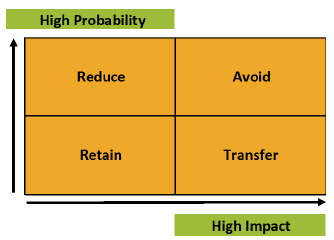You’ve had your P&C captive for years and it has continued to perform well throughout. So, what next? How do you capitalize on this success and build on your captive or rebuild an underperforming aspect of it? One word: Refeasibility. Okay, so ‘refeasibility’ isn’t really a word (according to Oxford Dictionary). At least it hasn’t been traditionally, but it is one that needs to be on the tip of the tongue of every captive owner. It is a word that has become somewhat synonymous with captive optimization and very accurately describes what captive owners need todo with an older captive: conduct a new (re)feasibility study.
The Importance of Refeasibility
As with all other business matters, your company’s captive needs and goals are likely to change over time, especially with new and emerging risks sprouting up frequently. Much like your family car, a captive should have a check up on a periodic basis. As a captive matures and companies evolve, captives need to be re-examined to determine if changes should be made to align with current organizational needs. Key reasons for this re-examination include the following:
- Positive or negative experience
- Example: unexpected adverse loss experience, such as supply chain interruption, resulting in business income loss not covered by insurance
- Surplus release or addition
- Example: surplus growth for the captive has been good and, as a result, there is now opportunity to add/expand coverages insured in the captive
- Opportunities to add new lines of coverage (that perhaps didn’t exist or weren’t relevant before)
- Example: Employee benefits or cyber risk
- Change in the risk profile of various risks
- Example: Litigiousness is on the rise in the insured’s industry and additional protection is needed
- Changes in the regulatory environment
- Generally speaking, regulatory changes have impacted business directly or indirectly, resulting in loss of revenue. This is a leading concern for small business owners.
- Changes in law (such as those resulting from case law outcomes like the recent Commissioner vs. Avrahami case)
To address all these potential changes, our Spring CARE (Captive Analytical Risk Evaluation) team recommends a captive evaluate its risk appetite and risk exposure at least every five years. Are you still writing the right lines in your captive? Are you still in the right domicile? Would a different structure be more profitable? Would other service providers make a difference? Have your claims changed significantly? Have regulations changed over the years? All this and more can be answered with a good review of your captive by a professional consultant.
Captive optimization starts with a captive refeasibility study. Every refeasibility study is different to varying degrees; the scope and resources required to conduct the study are dependent on the captive’s current structure, the events (if any) that triggered the study and the goals of the company. That said, through our Spring CARE system, we follow a carefully-constructed evaluation structure when our team works through the process of evaluating captive client’s existing captive. Generally speaking, we follow and recommend the following process in conducting a refeasabiity study, starting with goals and ending with measurement.
Goals Stage
In this initial stage, it is important to focus on confirming the goals and objectives of your captive, both new and old. Have the older goals been achieved? How have the goals changed over the years? This is acritical step in laying the groundwork and direction of your refeasibility project. Also critical at this early point is the collection of data. We consider the data to be collected here as not only the stats and facts of the captive, but also the more subjective (non-paper) data that can be gleaned through management interviews and informal stakeholder surveys. Finally, in any good refeasibility study, it is very important to identify changes in your risk profile. The risk matrix to the right shows the four classic actions a company can use to handle each of their risks (DeLoach 2000).

Typically, high probability or high impact risks should be considered for insuring in your captive. Some of the most common risks to insure in captives are listed below . Emerging risks should also be considering in this assessment. For example, A new technology like driverless cars will create both risk and/or opportunities across various industries.
Coverages commonly written into captives:
| Employee Benefits Risk | Property & Casualty Risks |
| AD&D | Auto Liability |
| Life/Loss of Key Employee | Business Interruption |
| Long-Term Disability | Directors & Officers Liability |
| Medical Stop-Loss | General Liability |
| Voluntary Benefits | Professional Liablity |
| Retiree Benefits | Property (deductible or excess layer) |
| Pension Buy-Outs/Buy-Ins | Trade Credit |
| Workers’ Compensation | |
| Commercial Policy Excluded Risk |
Impact Stage
You want to be sure you have a clear idea of what you’re looking to accomplish, and to what extent. The Impact Stage of a refeasibility study involves looking at all the different pieces of t he captive puzzle to determine how they would be affected by the changes you’re considering. A few activities that a professional captive optimizer would look to accomplish in this phase would be:
- Conducting an analysis of your risk financing optimization
- Reviewing your current reinsurance levels and optimizing your reinsurance use
- Stress testing of the captive with reasonable adverse case outcomes

Strategies Stage
It’s important to outline the methods you plan on utilizing in your captive refresh; in this Strategies Phase, a professional captive optimizer would first analyze any additional lines of coverage that could be insured by your captive.
Secondly, a surplus management strategy would be developed. There are various considerations in appropriately managing the capital and surplus levels over the life of a captive, including average cost of capital, retention levels, reinsurance use, taxes and a number of others that a team of actuaries and consultants would review and develop strategy to address.
Structure Stage
Now that you know what you want to do and how, it’s time to take a closer look at how it will all work together in a logical structure. Market changes should give you some food for thought. For example, pure captives are increasingly changing to sponsored entities. In this Structure Stage, it is important to identify investment management best practices as well as the optimal collateral structure.
Measurement
Finally, all sound captive projects end with measurement. This is the time to collect new data and determine to what extent goals were met, and impacts made. A great deal of this stage relies on the creation of solid industry benchmarks to measure current and future captive performance against. It is also important in the Measurement Stage for the optimization team to develop implementation plans based on their findings and make actionable recommendations for helping you achieve the goals that were established in the first phase of this project. At the conclusion of the measurement phase, a professional captive optimization team, such as our Spring CARE team, would produce a refeasibility report for your captive. In this report, all of the findings of the refeasibility study are outlined and reviews along with the recommendations developed in this phase. These findings can serve as a base line for measurement.

Conclusion
Regardless of how old or new your captive is, there are a number of internal and external factors that have changed since it was created. With all the changes taking place in the industry, it is a great time to have a professional come in and not only take a snapshot of how your captive is currently performing, but also help you project and strategize where your captive should be in the future. Now is a great time for a captive refeasibility study.
The term voluntary benefits was coined long ago when employers fully funded (or significantly subsidized) core benefits and voluntary benefits were an add-on, paid for by the employee through payroll deductions. As the landscape changed, core benefits evolved to be partially funded by employers and partially funded through payroll deductions. As a result, many benefits became voluntary.
For today’s employees, it’s not as simple as core and voluntary; it’s about choice. Employees need to balance what limited disposable income they have for all benefits, regardless of what they are labeled. Even still, the concept of core and voluntary resonates with employers as an industry norm, so it’s important to identify ways to avoid common pitfalls of voluntary program implementation:
- Think holistically
- Don’t forget about ERISA
- Consider enrollment options as a critical component in overall design
- Remember that education is key
- Help employees get the most from their plan
1) Holistically About Voluntary Benefits
Many employers think offering voluntary benefits is like checking a box – something that can be done quickly and without much deliberation. However, programs without thoughtful preparation are rarely successful in terms of education, enrollment and satisfaction. Voluntary benefits should be considered an integral part of the overall benefits package. A strong offering should take into account various factors, including but not limited to:
Current population:
Although a one-size-fits-all approach does not and should not exist, employee demographics can help you pinpoint which products would be most sensible for your collective audience. Generally speaking, those that are starting out in their careers have different priorities than those nearing retirement, and employees falling somewhere in the middle of the spectrum will have their own set of benefits needs as well. For example, accident insurance is more popular for families than for singles or empty nesters, while student loan repayment is more relevant for those in their 20’s and 30’s than for older employees.
Current benefit offering:
When considered in tandem, voluntary benefits can serve to protect employees and reduce their risk or perceived risk for various physical or financial troubles. For example, introducing a high deductible health plan offering complementary voluntary products (i.e. hospital indemnity, critical illness, accident insurance) can help decrease the financial burden on employees.

2) Don’t Forget About ERISA Considerations for Voluntary Benefits
Voluntary benefit programs may or may not be subject to the Employee Retirement Income Security Act of 1974(ERISA), depending on how they are structured and supported by the employer. ERISA provides important protections but can also pose constraints for employers and employees. Assuming you do not want your voluntary programs to be covered under ERISA, you must be careful to manage enrollment and administration separately from your core benefit programs. If you would like your voluntary plans to be subject to ERISA, then coordinating administration and enrollment will not be problematic; however, understand the potential impacts. ERISA compliance and your potential fiduciary duties should never be an afterthought.

3) Consider Enrollment Options as a Critical Component in Overall Design
Our research affirms that employees better understand the offering
and have higher enrollment when they participate in group meetings or individual meetings. In addition, vendor partners are often willing to offer more competitive pricing and waive enrollment requirements if they can meet with employees directly or send them some type of material in the mail.
While some employers welcome the “free” education and enrollment, others are concerned about aggressive selling or having employees using work hours to meet with potential vendors. If you think of voluntary benefits as part of your holistic offering, then leveraging work hours will be less of an apprehension when voluntary is an element of your complete attraction and retention tool.
The key is to think about the enrollment process as an essential design component of your voluntary program. Ensure that decisions surrounding enrollment fi t with the overall program strategy and make sense for your population. Providing comprehensive enrollment with core and voluntary may be a best practice for your group. This allows employees to make coordinated decisions regarding their contributions and programs. It also enables you to offer complementary plans for optimal plan selection. While that structure works for some, other employers feel employees have too many decisions to make during annual enrollment and prefer to stagger voluntary enrollment to allow more time for thoughtful decision making. There’s no right or wrong answer – each company and population is different.
4) Remember that Education is Important
Decision support tools have continued to evolve, providing employees with strong advocacy for traditional plans and voluntary benefits alike. Although voluntary benefits are designed to be less complex and easier to understand, for some employees the language is new. Summarizing the program(s) and sharing scenarios to help employees understand the products is often the best way to introduce a new plan.

Regardless of who funds the program, as the employer it is important that you educate your employees on the available offering. Employees should not elect a benefit they do not understand and employers should not offer benefits that are not valued by employees, or that employers themselves cannot explain effectively. Every dollar spent on voluntary benefits is money your employees are not spending on other necessities like monthly bills, student debt, groceries, emergency savings, or even401k contributions; make sure they are knowledgeable about what they are buying and ensure that it’s a competitive product in the market.
Education can be facilitated in many ways including traditional employee meetings, brochures, benefit fairs, and onsite sessions with vendors. At Spring we have also assisted clients with quick videos that provide the highlights of a program and generate interest. These videos have been well received and employees are able to retain the information from a creative video more easily than a detailed presentation. Videos are also shareable and can be viewed by family members who may be a critical part of the decision-making process.
5) Help Employees Make the Most of the Plan
After you have implemented a voluntary program and educated your membership it’s important that you continue to monitor the program and assist your employees in optimization. Sometimes employees forget about the benefits they have available to them and continue to make monthly contributions to plans but they neglect to fi le claims because they don’t remember what they have elected. A few simple actions can help your employees make the most of the plan:
- Send a quarterly newsletter to all employees, or just those enrolled in voluntary benefits. This will give you the opportunity to remind them of the program benefits. It can also help facilitate changes (i.e. enrolling spouses, children) and provide an opportunity to as questions.
- Partner with your vendors. For example, if you have a purchase program in place, they often run specials and send postcard reminders. Take advantage of those specials! Perhaps you could run a joint wellness campaign linked to specials on health equipment. Ask if they would be willing to raffle off something like a treadmill or vacation to align with your wellness strategy.
- Remind your employees to file claims. Even if you cannot leverage actual data, you can send a reminder at the midpoint of every year for wellness visits with a link to the claim form. For example, most critical illness and accident plans offer a wellness rider – find out how many employees use that benefit and try to increase that percentage.
- Ensure the program remains competitive from a pricing and design standpoint. Employees should feel assured that the benefit they’re purchasing through their employer remains is top tier.

Taking the above factors into account will help you establish a voluntary benefit offering that is accessible and relevant to your employees and that is well worth the effort on your part. Today’s workforce has come to expect more than just the basics when it comes to benefits, and voluntary products allow you to diversify your benefits package, keeping you competitive with market standards without any significant cost increase.
However, it is not enough merely to offer voluntary products and services – they need to be the right ones for your population, they need to be communicated effectively, they need to be readily understood, they need to account for regulations like ERISA, they need to be fully utilized and they need to be rolled out in a way that makes sense for your organization. By covering these bases you’ll be able to avoid the most common pitfalls and successfully offer a valued voluntary benefits programs.